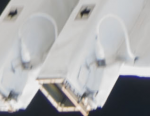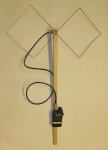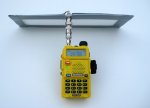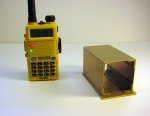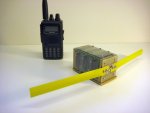The $50sat team is celebrating 90 days in orbit by proposing a technical challenge to all interested amateurs. $50sat is capable of responding to uplink command packets:
There are 3 open packets:
Test packet - $50SAT responds by sending the RSSI of the received packet in slow FM Morse.
Request data packet - the normal data packet is sent.
Request RTTY - The RTTY is sent.
In addition all received packets result in two copies of the ack packet being sent, that contains the RSSI of the received packet.
All the required information to accomplish this is available on the drop box location available
through the $50sat web page at
www.50dollarsat.info .
Anyone that can demonstrate a successful command uplink by submitting a recording of the response packet along with the date, time and location of of the contact will receive a Certificate of Technical Accomplishment signed by all three builders of $50sat. Submissions can be made to the $50sat email address; 50dollarsat at yahoo.com. This is a significant challenge because there is no magic black box that you can buy to do this.
After 90 days of operation, the Kodak KLIC-7002 camera battery that powers the satellite has fallen off about 100mV, but operations still seem normal.
We have also programmed a special 5th morse beacon to thank our launch sponsor and mentor prof. Bob Twiggs. Please give a listen for the message TNX KE6QMD on the FM Morse beacon.
QSL cards are still available to anyone that posts telemetry, either hand copied CW or RTTY captures, to the 50dollarsat yahoo group.
73 and good luck to all from the $50sat team

